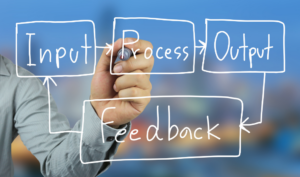
5 Ways Leaders Can Create a Successful Work Environment
What is a great “place” to work today? With many abandoning the office tower or business park cubicle office, we’re increasingly emerging from an era

What is a great “place” to work today? With many abandoning the office tower or business park cubicle office, we’re increasingly emerging from an era

Now more than ever, organizations are interested in ways to re-design employee experience. But what’s the best way to accomplish this? How can HR technology

Women hold more than half of American jobs. Yet, they make up just 27 percent of executive and senior-level management in S&P 500 companies. Meanwhile,

The worst of the COVID-19 pandemic is finally starting to come to an end. Because of this, many companies are re-opening their brick-and-mortar offices. Employees

As we enter the season of gratitude, I have contemplated the importance of employers, managers, and leaders expressing thanks to their hardworking team members. We

Think back to your first day of work with your first major employer. You probably arrived early on your first day, ID card ready, and

Let’s face it: Many team members feel unsupported by their leaders, and it’s the single biggest reason why people quit their jobs. It also turns out

The “Great Resignation” has organizations everywhere in strategy mode. They’re brainstorming ways to keep employees happy and in turn, keep them on board. So what’s

Employee engagement is a powerful dynamic and, even though it may seem as if this subject has been over-hyped in recent years, it hasn’t. Research shows that

With the increased need for upskilling employees, research shows that alignment between managers and employees is essential for igniting employee development. Most importantly, 360-degree-feedback, when

Business owners often look at the basic numbers to know how they’re doing. How are sales? What are our operating expenses? How much money did

As Franklin D. Roosevelt once said, “A smooth sea never produced a skilled sailor,” and the COVID-19 pandemic is no exception. As regulations lift and

Most of us want to have a perfect business model out of the gate, but that’s a pie-in-the-sky attitude. As much as we all want

Salary isn’t everything. As a matter of fact, eighty percent of employees say that they’d choose additional benefits over a raise. Sixty percent say that

It’s irrefutable: Hybrid workplaces are in, and inflexible employers are out. The data is astounding. In some studies, 80 to 90 percent of employees report

Ever get that blah feeling? That surge of listlessness you can’t explain? The thing that keeps you in bed watching Buffy the Vampire Slayer until

The talent cliff is a phenomenon where businesses lose employees at a rapid rate. It isn’t a new problem, but it regularly appears in times

Filling C-suite vacancies as soon as possible typically involves contacting executive search firms and posting to niche job sites. While standard recruitment tactics can certainly

As we look ahead to redesigning the post-pandemic workplace and re-establishing business relationships, stakeholder engagement will once again be one of the more critical aspects

You are a remote employee and a member of a dispersed team. And this is how your employer chooses to communicate organizational change while working

Rewind for a minute to the pre-pandemic state of your company culture. How did you measure up in terms of morale? Recruiting? Retention? How about

Welcome to Workplace 3.0… How our workspaces have transitioned! There was a time not so long ago when most of us led dual lives –

COVID-19 inevitably uprooted the way our society works. Due to the pandemic, organizations have uncovered cracks in their foundations that shed light on long-standing social

Over one year into the pandemic, nearly everything about the workforce has changed — from when and where we work to how employees interact with

While countless aspects of daily work have changed over the past year, one thing remains the same across most organizations: Employees value recognition. In fact,